I took these photos over too brief of a time period, and my technique was sometimes sloppy. I hope to return here soon, so as to take more time, explore more places, and to participate in the monks' excellent liturgies. Many thanks to Cheryl, Tom, and Tina for making this trip possible.
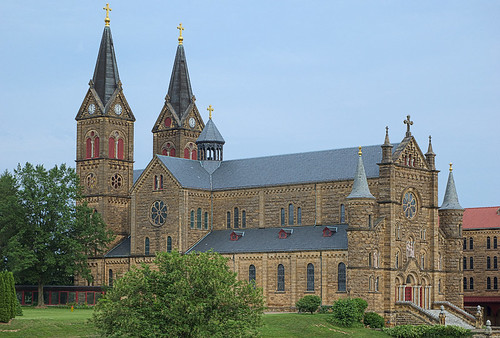
From the Abbey's website:
Saint Meinrad Archabbey was founded in 1854 by monks from Einsiedeln Abbey in Switzerland. They came to southern Indiana at the request of a local priest for assistance in addressing the pastoral needs of the growing German-speaking Catholic population and to prepare local men to be priests.Saint Meinard was a Benedictine monk and holy hermit. He was killed by robbers in a.D. 861.
Both of these missions remain part of Saint Meinrad's ministry to the Roman Catholic Church, as Saint Meinrad operates a graduate school of theology and has more than a score of its monks in parish work, chaplaincies, and diocesan assignments.
The Benedictine community at Saint Meinrad consists of about 100 men who dedicate their lives to prayer and work. They gather in community five times a day-for morning prayer, noon prayer, evening prayer, compline and Mass-to pray for the Catholic Church and the world. Guests are welcome to join the monks in prayer in the Archabbey Church.
In addition, the monks spend private time reading spiritual and religious materials. They live by the wisdom and guidance of the Rule of St. Benedict, the sixth-century instructions for community living written by St. Benedict.
Shortly after arriving in Indiana, the Benedictines began offering high school courses to local youths. In 1861, the monks expanded their general courses to include undergraduate courses in philosophy and theology. Through these programs, the monks of Saint Meinrad began their mission, which continues today: preparing men for service in the Church as priests.
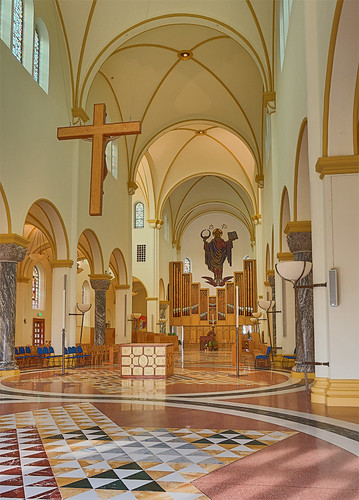
Nave of the church, looking to the west. Seating here is antiphonal; that is, the chairs and choir stalls face each other across the nave. According to the traditional form of prayer of the Divine Office, each side of the church alternately chants the verses of the Psalms and canticles. The monks chant mainly in English, based on Gregorian modes, along with some Latin: you can freely download or purchase their chant tones here, and view their musical catalog here.
According to the Visitor's Guide:
The Church was constructed during a seven-year period, ending in 1907. Monks and area townspeople built the Church, using sandstone quarried on the Archabbey's property at Monte Cassino and hauled in mule-drawn wagons. The blocks of stone, some three feet thick, were cut by hand.
The church was extensively redecorated in 1997.
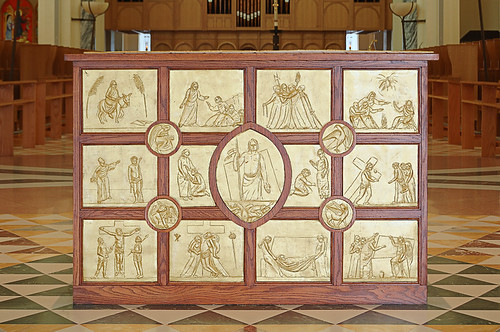
The new altar; here shown are scenes from the life, death, and resurrection of Christ, as well as symbols of the Evangelists.

Monk's choir stalls; these face another set of stalls on the other side of the nave.

Archabbot's chair.
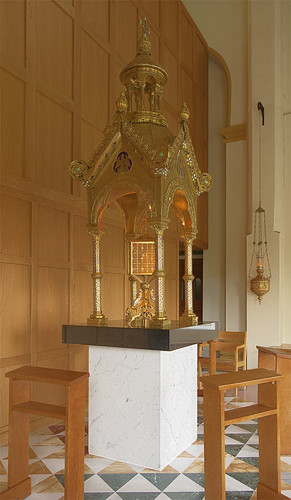
Tabernacle.

According to the Visitor's Guide:
Most of the Church's stained glass windows were made in Munich, Germany, and installed in 1908. The windows on the north and south walls depict the Beatitudes. The top section of each window represents an event from the life of a Benedictine saint that exemplifies the Beatitude. A corresponding scene from the Old Testament is depicted in the lower portion.The lower half of this windows shows the Old Testament Patriarch Joseph with Pharaoh.
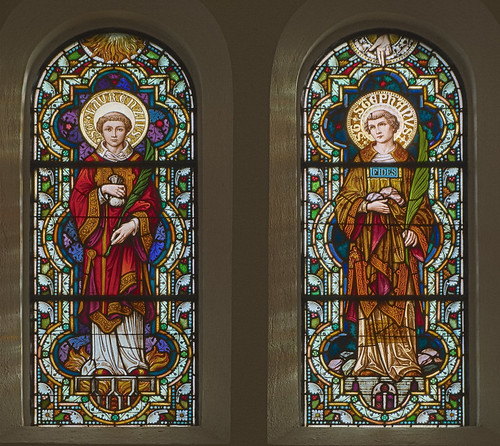
Windows showing the deacon-martyrs Saint Lawrence and Saint Stephen.

Saint Leo the Great
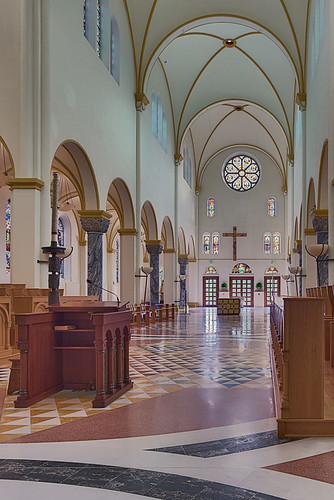
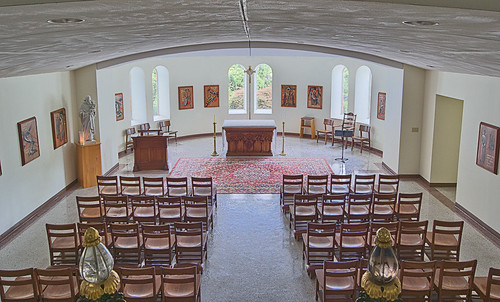
Under the church is Saint Joseph's Chapel.

An ornate altarpiece in the chapel.
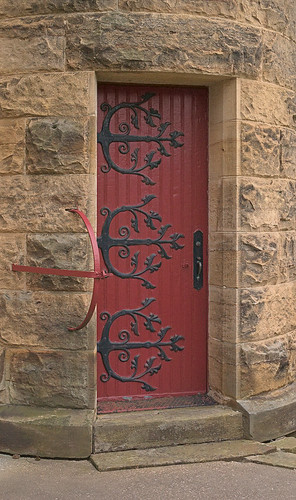
A side-door into the church
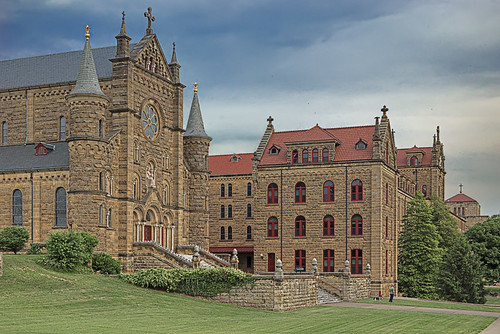
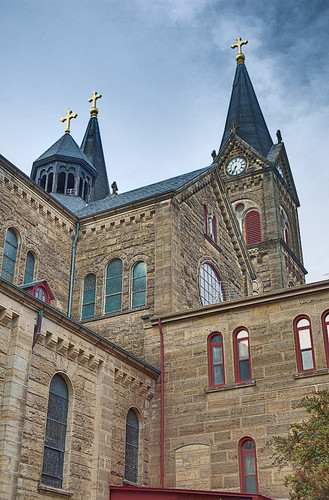
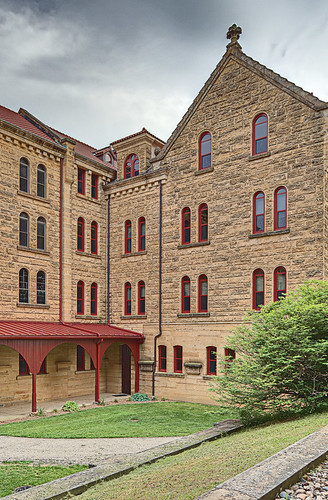
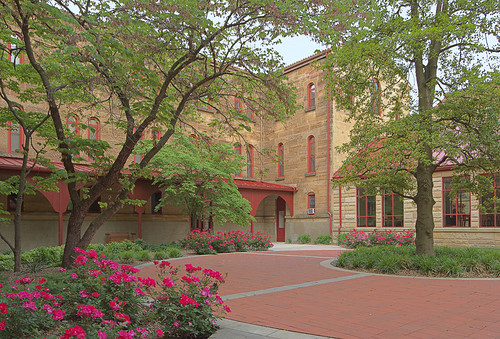
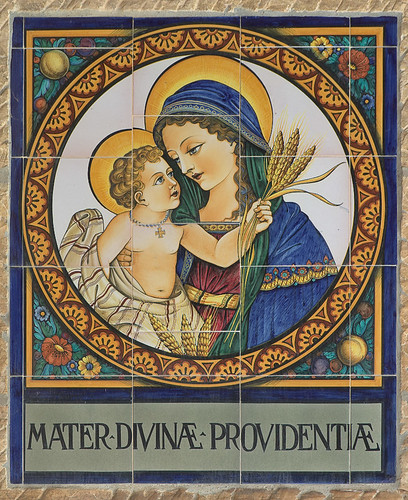
Virgin and Child in one of the courtyards.

Saint Bede Hall.
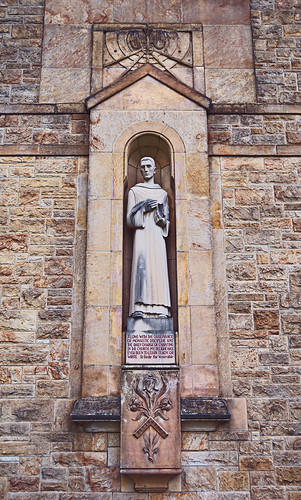
Statue of Saint Bede the Venerable (a.D. 673-735). He is know for writing the Ecclesiastical History of the English Nation, which includes early history of Britain.

Newman Hall.

The auxiliary buildings here are often painted red.
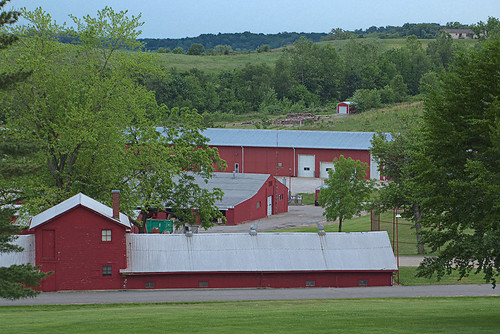
Besides the Graduate School, Saint Meinrad operates businesses, including Abbey Press and Abbey Caskets. According to the Benedictine tradition, monasteries are to be self-sufficeint; the monks live under the principle of ora et labora, or prayer and work.
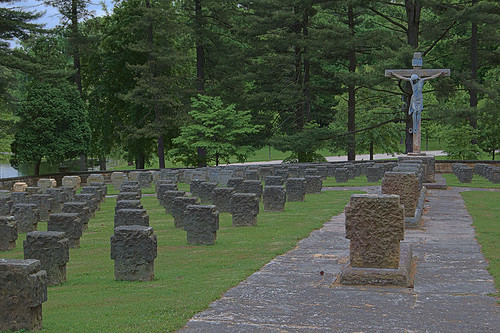
The monks' cemetery.
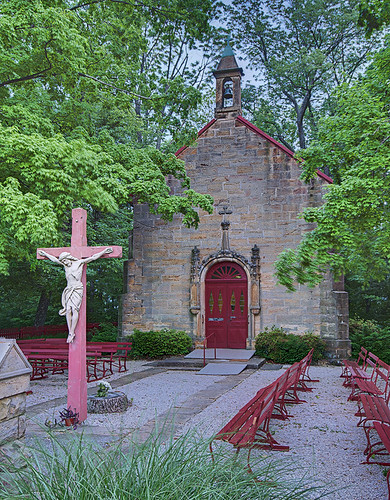
Two things I remember the most when visiting Saint Meinrad's: the monks chanting the Litany of Benedictine Saints and the Salve Regina, and the tiny Monte Cassino Shrine, located about a mile from the Abbey.
From the website:
The small chapel of Monte Cassino is located on a hill near the Archabbey. Surrounded by trees and panoramic views of the Anderson Valley, the shrine dedicated to the Blessed Virgin Mary is a testament to the age-old tradition of seeking God.
The history of Monte Cassino Shrine tells how a novena to Our Lady of Monte Cassino is credited for saving the village of St. Meinrad from a smallpox epidemic in 1871. The faith that God's people placed in the intercession of Mary more than 130 years ago has not waned. Since the chapel's dedication in 1870, thousands of people have visited the sandstone chapel to offer their prayers and petitions.
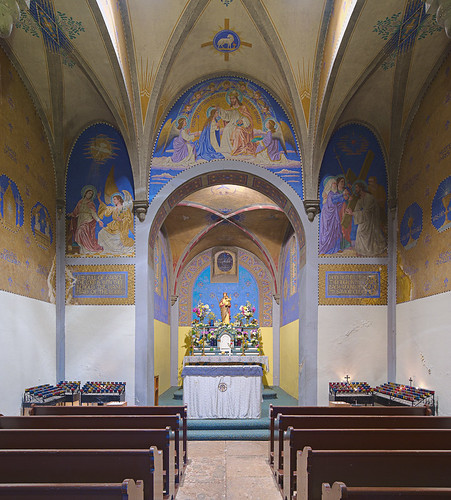
How can something be so small and so humble, yet be so rich?
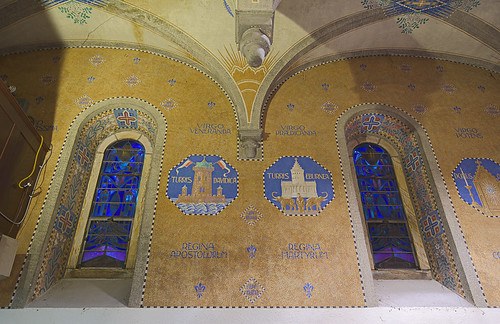
The chapel is decorated with Mary's many titles.
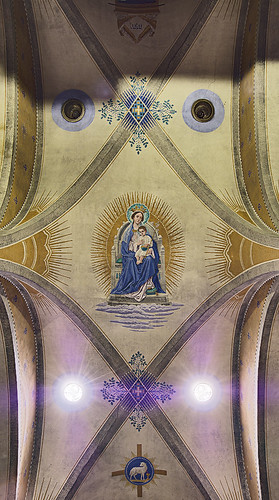
A view of the ceiling.


I was deeply touched by this shrine. If only I could linger longer, and not be distracted with the camera.

Jake, the famous Basset hound, eyes a package of Archabbey cookies.
Click here for a map of the area.


Beautiful photos of a beautiful place. My husband and I will soon be joining the Benedictine Oblates of St. Meinrad Archabbey, so we really appreciate the pictures you have posted of our new spiritual home.
ReplyDeleteI am generally aginst the radical reconfiguring of historic churches, but I must say that the Abbey did a better job of it than most places.
ReplyDeleteThe Monte Casino Shrine is extraordinarily beautiful.
I lived at Saint Meinrad for six weeks this past summer and miss it so much! I loved seeing the pictures of the Holy Hill! Thank you for posting!
ReplyDeleteI'm a Benedictine oblate of Saint Meinrad Archabbey, and I was glad to visit for a few days this summer. I took Fr. Columba's two-week chant course there in 1998, and the Archabbey became a very holy place for me.
ReplyDeleteThe Archabbey Church is spectacular. There was a transition time in the 1970s when it was sort of all white inside, with the monks seated on individual chairs on a bare-looking floor (there are interesting photos in some of their historical books). Glad the monks voted to bring back the choir stalls! There used to be some balconies, too. The renovated church works so well with the monastic liturgy: contemporary yet still very rooted in tradition and very dignified.
I spent two years at Saint Meinrads as a seminarian. It is a beautiful, serene place, conducive to spiritual growth. Thank you for this article. Photo's of Monte Cassino Chapel are priceless
ReplyDelete